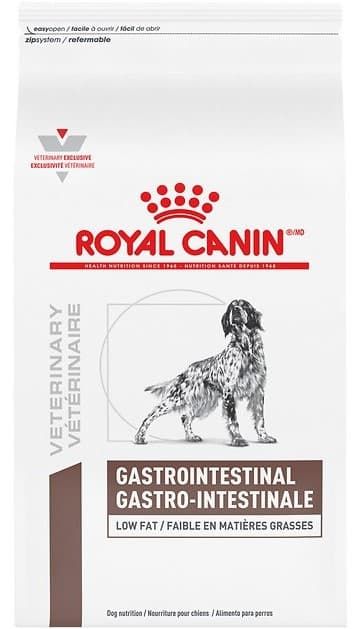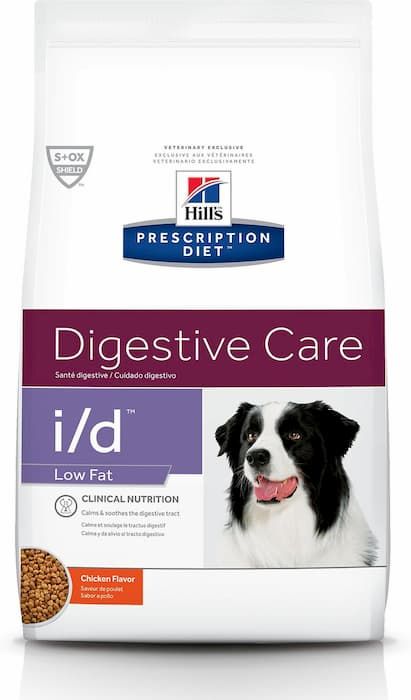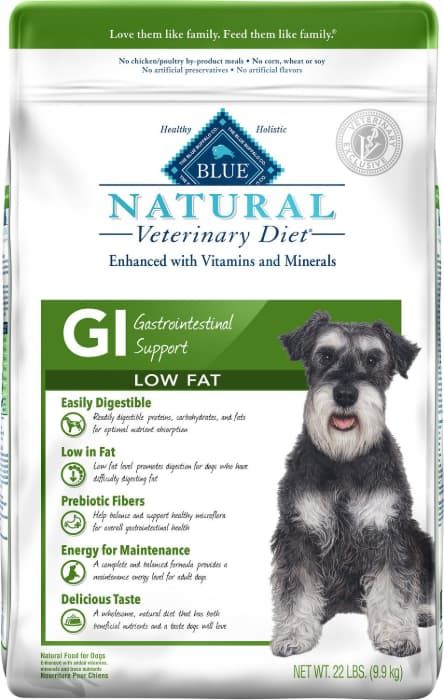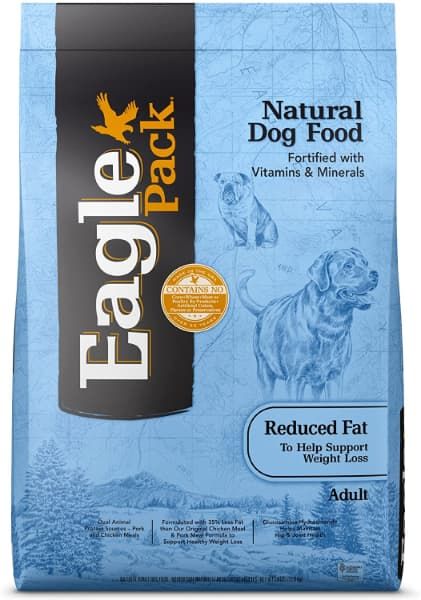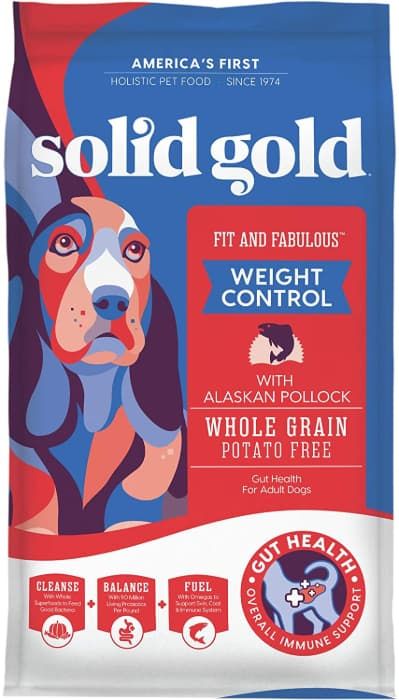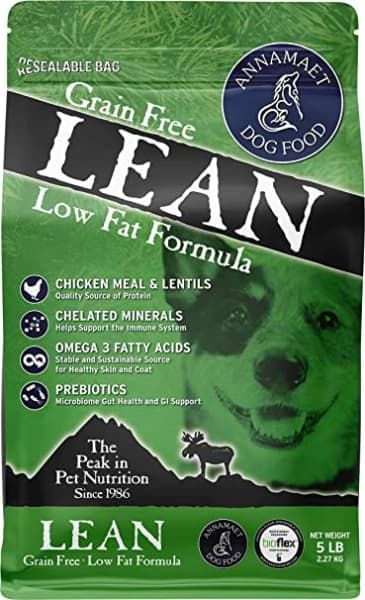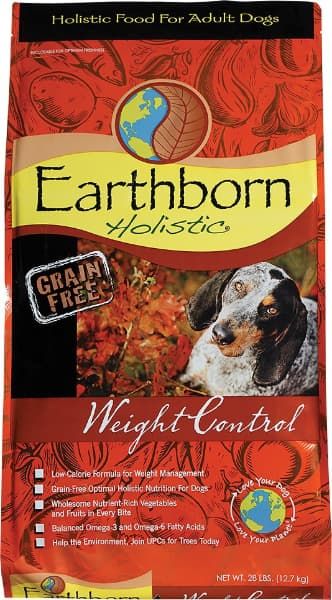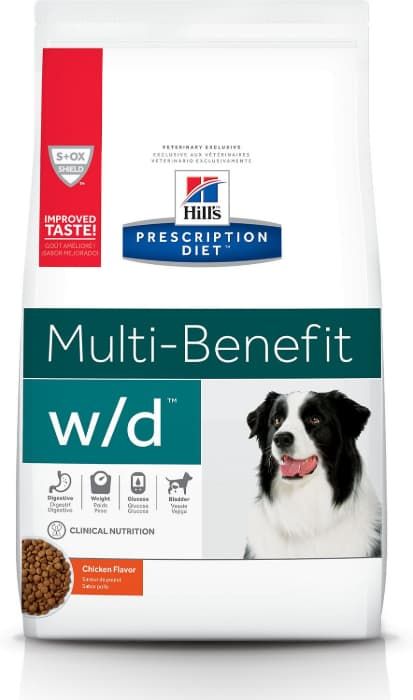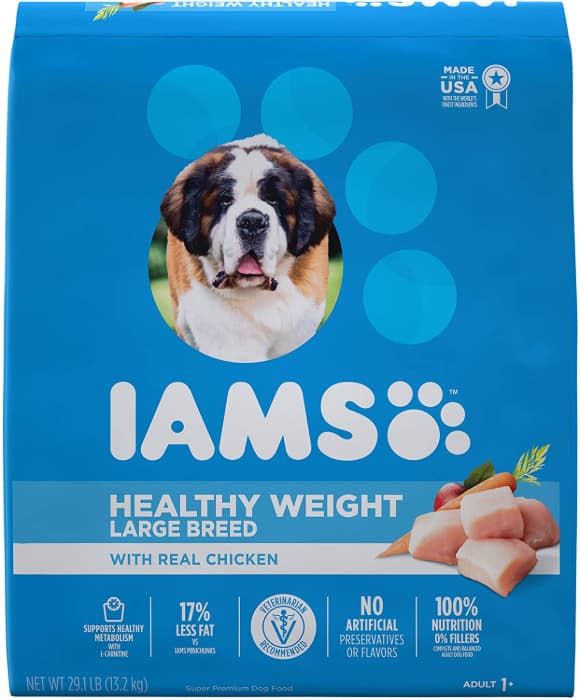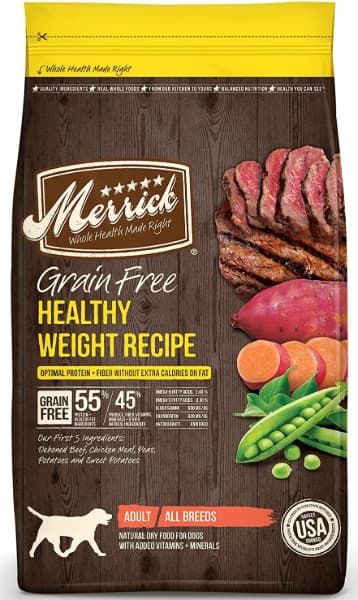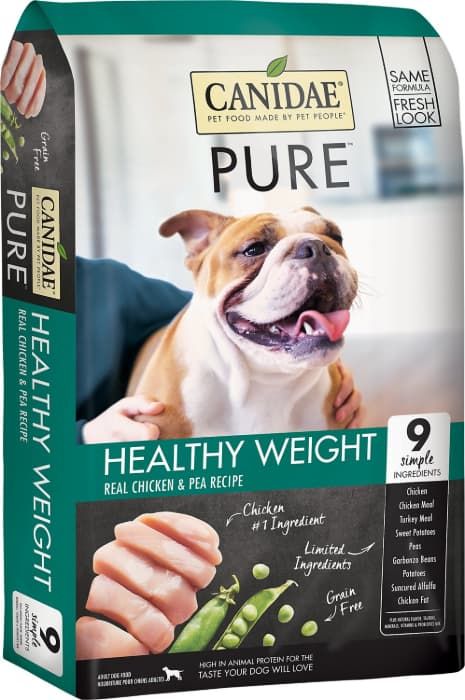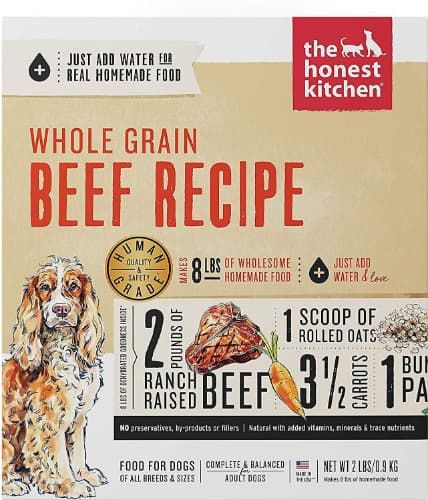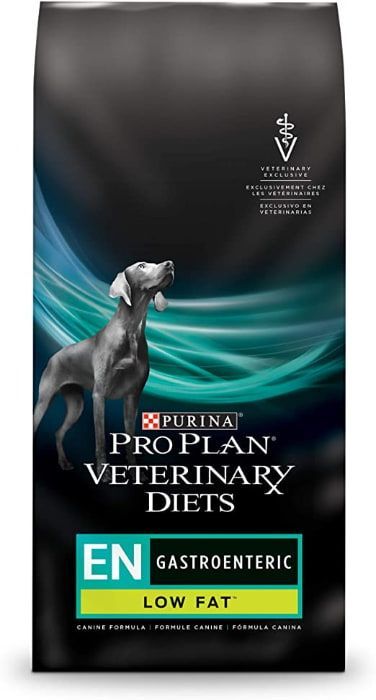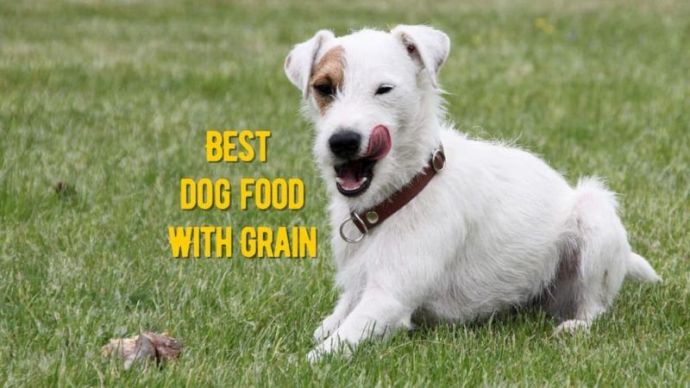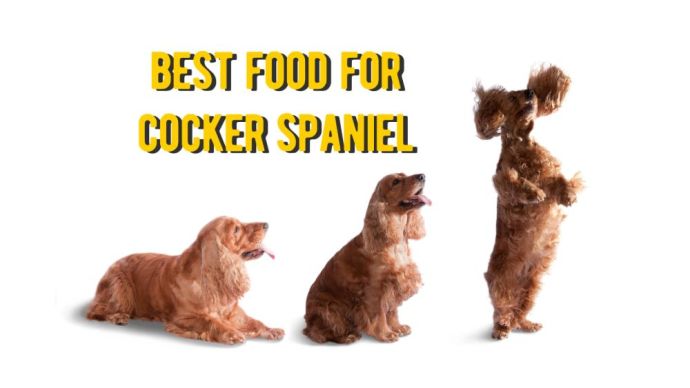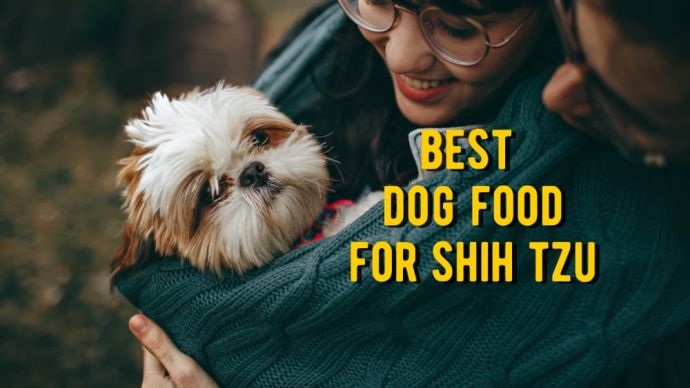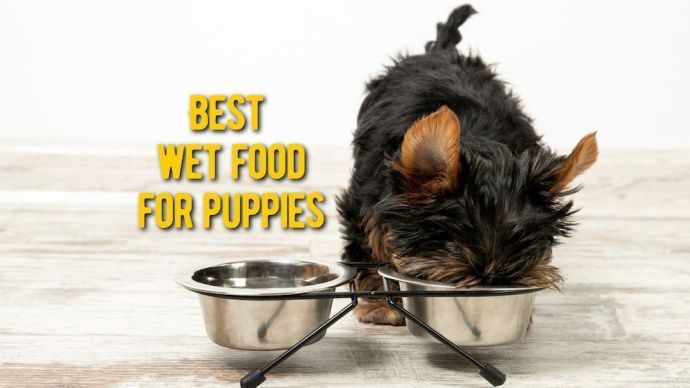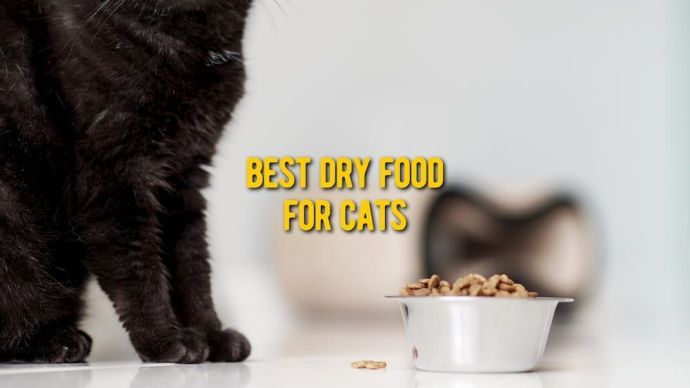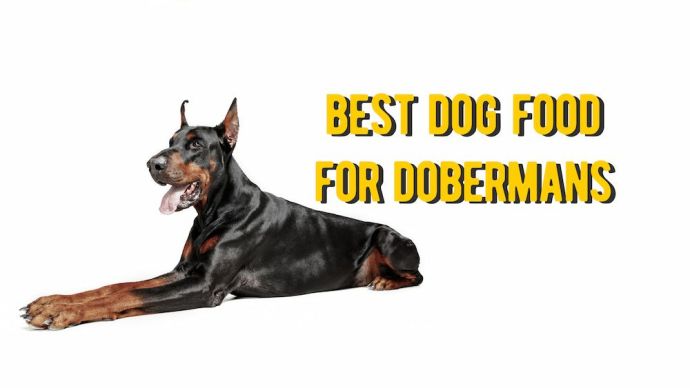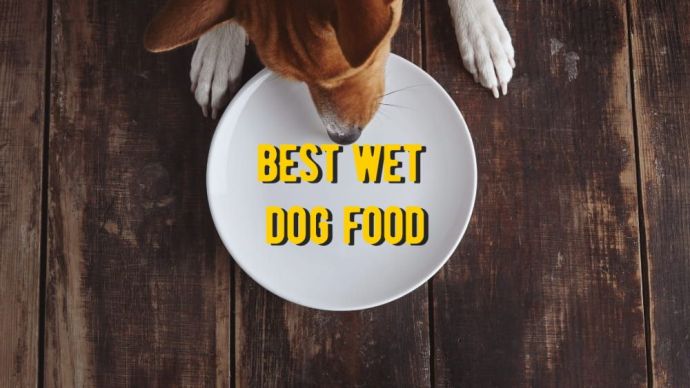The 15 Best Low Fat Dog Food: Review and Buying Guide
Written by:
Author: Scott Jeffrey
Scott is a professional blogger with 12+ years of experience in writing, and holds an MA in anthropology. He has two cats as housemates. Also, Scott is passionate to research on pet-related topics such as dog training, puppy feeding, and cat health.
View all 63 articlesLearn about our editorial process and veterinary review board.
Reviewed by:
Veterinary review
by Dr. Joanna De Klerk
Dr. Joanna de Klerk is a professional Clinical Veterinarian. Member of the Royal College of Veterinary Surgeons UK and a member of the South African Veterinary Association. Graduated with a Master of Science in Tropical Animal Medicine in 2018. Professional author, she has been writing in scientific journals, and also several book series. Joanna loves to enjoy time with her young daughter and family in her free time.
View all 10 articlesLearn about our veterinary review board
Viewed: 1764
Updated on: 01/24/2023
Low-fat food is the great dietary option for dogs with pancreatitis, exocrine pancreatic insufficiency, and lymphangiectasia. They may also aid in weight loss; however, there are much better ways of achieving weight loss for your pet. It is important to remember that a low-fat diet should not be fed without the go-ahead from your vet, as fat is an essential nutrient and shouldn’t be restricted from otherwise healthy dogs.
The Best Low-Fat Food for Dogs (All Reviews)
In this review, we gathered TOP-15 low-fat foods for your pet.
1. Royal Canin Veterinary Diet Gastrointestinal Low Fat Dry Dog Food
Royal Canin has produced its own veterinary diet for canines in a low-fat. Whether you need access to food for a recovering animal or you need access to exceptional food formulated to combat gastrointestinal problems and pancreatitis, this is a formula that can be highly beneficial. The low-fat content also contains omega-3 fatty acids in fish oil to improve GI health.
This is one of the most suitable formulas because it’s been backed by many years of research and in-depth analysis from veterinarians. You can get access to this excellent quality product by receiving a recommendation from your veterinarian.
Key Features:
- Fat content* — 5% (*on a dry matter basis)
- Designed a prescription diet.
- Includes omega-3 fatty acids and antioxidants.
- Comes veterinary recommended.
Pros
Cons
- A prescription diet formulated.
- Low-fat formula.
- Ideal for dogs that have trouble digesting fat.
- Not found.
2. Hill’s Prescription Diet i/d Digestive Care Low Fat Chicken Flavor Dry Dog Food
This product is ideal for ensuring appropriate digestive measures for your dogs to build their body tissues. Unfortunately, when your dog’s fat level becomes too high, this would affect digestive health. For this reason, feeding your pet the right amount of dry fat is necessary. This product is clinically proven to support digestive health.
Key Features:
- Fat content — 7.7%.
- It addresses inappropriate amounts of fats in the dog.
- It aids digestion.
- Supports the repair of tissues.
Pros
Cons
- Great taste.
- Suitable for all breeds.
- Promotes digestive functions.
- It contains clinically proven antioxidants.
- Builds a healthy immune system.
- It does not resolve stomach issues.
3. Wellness CORE Grain-Free Reduced Fat Turkey & Chicken Recipe Dry Dog Food
The wellness CORE reduce formula is designed to help pets with weight loss and weight management. This balanced dry food comes with antioxidants, omega fatty acids, probiotics, and glucosamine, which can be an excellent formula for weight management and health.
Key Features:
- Fat content — 10.9%.
- Excellent access to extra vitamins.
- Rich, reduce fat formula.
- Premium and natural ingredients.
Pros
Cons
- Grain-Free.
- Includes Taurine.
- Made with Salmon oil for powerful Omega threes.
- Can get quite expensive that it’s only available in smaller bags.
4. Blue Buffalo Natural Veterinary Diet GI Gastrointestinal Support Low Fat Dry Dog Food
Blue Buffalo produced this formula with natural ingredients and highly digestible proteins. By providing a formula with optimal nutrient absorption, the company produced something perfect for fussy eaters with the balance and support to improve the gastrointestinal system.
Key Features:
- Fat content — 10%
- A taste to satisfy fussy eaters.
- Enhanced with vitamins and minerals.
- Easy to digest.
Pros
Cons
- Balanced formula.
- Made with prebiotic fibers.
- Natural recipe.
- Extra GI balance can be more expensive if it is not needed for your pet’s condition.
5. Purina Pro Plan Veterinary Diets OM Overweight Management Formula Dry Dog Food
This is the ideal food for dogs with sensitive stomachs, and it helps them lose weight while maintaining their muscles. It is suitable for all breeds and contains the right amount of protein and fats. Also, it contains fiber that helps your pet feel easily satisfied.
Key Features:
- Fat content — 5.7%
- It is ideal for all breeds of dogs.
- It helps dogs lose weight.
- It has excellent taste.
Pros
Cons
- It has great taste.
- Uniquely formulated to aid weight loss and also maintain their muscles.
- It is ideal for weight management.
- Nonscale victory.
6. Eagle Pack Reduced Fat Adult Dry Dog Food
The eagle pack is a reduced-fat formula that provides a well-balanced level of proteins to support weight loss. With a wide range of dual animal proteins, this product can support healthy muscle tone while improving weight loss.
Key Features:
- 35% less fat.
- Glucosamine hydrochloride to maintain joint health.
- Robust vitamin and mineral blend.
Pros
Cons
- Offers excellent value.
- Offers enhanced nutrients for joint health.
- Antioxidants for immune health support.
- Is made with many meat proteins could not be ideal for dogs with allergies.
7. Solid Gold Fit & Fabulous Low Fat/Low Calorie with Fresh Caught Alaskan Pollock Adult Dry Dog Food
This formula is produced using a series of superfoods, and it’s a rich source of B vitamins, minerals, and more that can keep your pet happy and healthy. The guide is free of potato and a series of other fillers and uses alternative protein sources to assist with allergy support.
Key Features:
- Fat content — 7.2%.
- No grains or fillers.
- Rich in fiber, B vitamins, and minerals.
- Uses probiotics and superfoods.
Pros
Cons
- Excellent source of protein in Alaskan Pollock, perfect for dogs with allergies.
- Improved immune system support.
- Uses rice as a filler, which might not be suitable for some dogs.
8. Annamaet Grain-Free Lean Low Fat Formula Dry Dog Food
This product is the perfect way to control weight in large breeds and offers healthy immune system functions. If you seek a reduced-fat formula for dogs struggling with pancreatitis or a wide range of other conditions, this could be the perfect option for your pet.
Key Features:
- Fat content — 10%.
- Prebiotic support.
- L-Carnitine included.
- Added fat metabolism.
Pros
Cons
- Grain-Free.
- Prebiotics.
- Specialty minerals are added to improve immune system functions.
- Made in USA.
- Contains lentils as the main filler.
9. Earthborn Holistic Weight Control Grain-Free Dry Dog Food
The holistic weight control grain-free formula is unique. This is an excellent formula fortified with superfoods to ensure that your pet’s immune system functions can be maintained while keeping them satisfied and full.
Key Features:
- Fat content — 7.8%
- Proper ratios of Omega six and three fatty acids.
- Made free of grain or gluten.
Pros
Cons
- Helps maintain healthy joint cartilage.
- Fortified glucosamine.
- Produced using a chicken meal.
10. Hill’s Prescription Diet w/d Multi-Benefit Digestive, Weight, Glucose, Urinary Management Chicken Flavor Dry Dog Food
Many dogs can be considered prone to weight gain but the prescription diet includes glucosamine, urinary management and digestive help. This is food developed by new traditionalists and veterinarians and contains a wide range of support for pets in maintaining their health. With items for energy support and more, this is a feature rich food.
Key Features:
- Fat content — 10.1%.
- High fiber levels.
- Enhances energy.
- Helps with the fat metabolization.
Pros
Cons
- A well-balanced formula.
- High fiber levels.
- Keeps your pet full.
- Can be more expensive with the added support.
11. Iams Proactive Health Adult Dry Dog Food for Healthy Weight
Iams has the perfect proactive healthy weight formula for adult dogs and large breeds. Formula not only helps keep a healthy weight and also supports joint and bone health, specially formulated for large breeds.
Key Features:
- Fat content — 11.4%.
- Contains glucosamine.
- Veterinarian recommended.
Pros
Cons
- Supports healthy metabolism control.
- Perfect for weight management.
- Ideal for large breeds.
- Only 17% less fat than in traditional formula.
12. Merrick Grain-Free Healthy Weight Dry Dog Food Recipes
Merrick grain-free formula is perfect for maintaining a healthy weight, and it includes ongoing improvements from chicken meal, potatoes, peas, and sweet potatoes. This is a grain-free formula designed for all breeds.
Key Features:
- Fat content — 11.2%.
- 32% protein.
- Great taste with beef.
Pros
Cons
- Made with grain-free formula.
- High protein.
- Made in USA.
- It may not be ideal for fussy eaters.
13. CANIDAE Grain-Free PURE Healthy Weight Real Chicken & Pea Recipe Dry Dog Food
The Canidae grain-free formula is a chicken and pea recipe that includes healthy weight support. It’s a grain-free formula that’s produced without any type of artificial colors, preservatives or ingredients.
Key Features:
- Fat content — 10%.
- Natural product containing no extra preservatives colors or flavors.
- Grain-free and made without corn, soy or wheat.
- Simple whole food recipe.
Pros
Cons
- Natural food that is grain-free;
- Made in USA;
- Fortified with omega six and three.
- Has led to constipation in some pets.
14. The Honest Kitchen Dehydrated Wholegrain Beef Recipe
This product is cooked up as a whole grain dehydrated recipe. The complete recipe is designed for breeds of all sizes. It’s made with dehydrated and minimally processed whole-grain foods without the use of GMOs.
Key Features:
- Fat content — 9.4%.
- Made with minimally processed and low-calorie food.
- No GMOs.
- Raw food diet-approved.
Pros
Cons
- Healthy ingredients for raw food;
- Whole grains;
- No by-products.
- Can require a bit more prep time.
15. Purina Pro Plan Veterinary Diets Low Fat EN Gastroenteric Dry Dog Food
Low in fats and calories and packed with a high degree of proteins to improve lean body mass. This formula that is produced by Purina offers a series of dietary benefits that can assist with nutrient absorption.
Key Features:
- Fat content — 10.2%.
- Designed to help dogs lose weight.
- Low in calories and fat but high in protein.
- Can help dogs with diabetes.
Pros
Cons
- Designed for use with a wide range of diets.
- Formulated to help lose weight.
- Made in the USA.
- One of the most expensive on the market.
*All ratings are formed by the article’s author based on own research and combined with customer reviews.
What is a low-fat diet, and when do Dogs need it?
Society has ingrained into us that fat is unhealthy and linked to heart disease and obesity. So indeed, it’s the same for our dogs? In fact, canine nutrition is very different from humans; fats are an essential nutrient and should make up a healthy portion of their diet. Fats are an excellent energy source and are necessary for absorbing many vitamins and nutrients. So why do some dogs need a low-fat diet?
When we think of the term ‘low fat’, the thing that comes to most peoples’ mind is weight loss. But for dogs struggling with weight, there are many other, more effective ways to get them to shed the pounds. Low-fat diets are more commonly used to help manage certain health conditions that benefit from restrictive fat diets. These health conditions include:
- Pancreatitis
- Exocrine pancreatic insufficiency (EPI)
- Lymphangiectasia
READ MORE: How much to feed a Puppy?
So, what are they, and why does fat restriction help?
Pancreatitis is the most common health reason which requires fat restriction. It is a severe disease where digestive enzymes are prematurely activated before leaving the pancreas, leading to inflammation, bleeding, and destruction of the organ. The most common symptoms are severe abdominal pain, vomiting, and diarrhea; however, in some cases, it can also lead to organ failure and death. Pancreatitis can be triggered by many causes, including high dietary fat content. If your dog is being treated for pancreatitis, he needs this diet. Also, dogs who have had pancreatitis in the past may be prone to developing it again, and therefore should be managed on a low-fat diet long term.
Exocrine pancreatic insufficiency is another condition relating to the pancreas which benefits from a low-fat diet. This is a condition where the pancreas does not synthesize or secrete digestive enzymes, resulting in loss, fatty feces, diarrhea, and hunger. Supplementation with digestive enzymes can improve the symptoms, but even with enzyme supplementation, fat is still not absorbed into the blood properly, leading to fatty feces and diarrhea. This diet can help with this, although this should be carefully monitored if it is too low, not enough fat-soluble vitamins will be absorbed, and the symptoms will worsen if it is too high.
Finally, lymphangiectasia is also a condition that benefits from low-fat food. It is commonly confused with inflammatory bowel disease. However, it is a different condition. Nonetheless, they can occur concurrently. Lymphangiectasia is a condition with no known cause and results in dilating a part of the intestine walls, known as the villi. Symptoms include protein loss (leading to fluid build-up in the abdomen and lungs), vomiting, diarrhea, and weight loss. Unlike EPI, a low-fat diet reduces diarrhea associated with poor fat absorption into the blood.
So, these diets can benefit several health conditions, but are they helpful for weight loss?
In people, low-fat diets are wonderful at aiding weight loss, but in dogs weight loss can be achieved more successfully with other methods. Nevertheless, these diets can aid to some degree in managing obesity, so in combination with other efforts, your pet can effectively fight the extra pounds with a diet change. Some ways to help reduce weight include:
- Feed your dog according to his ideal weight and not his current weight, as detailed on your food packaging.
- Feed two structured meals per day instead of allowing your dog to graze on food.
- Increase an exercise by taking him for more walks long walks, or dedicating some time to playing with him in the garden.
- Reduce or eliminate threats, and remember treats equal calories, so remove the equivalent amount of food from his daily meals.
- Switch to a low calorie, high satiety food, so he feels fuller even though he’s getting less.
When it comes to considering a low-fat diet for your pet, whether it be to treat an underlying condition or complement your efforts to get him to lose weight, you should always consult your veterinarian first. Fat is not unhealthy, and in fact, contains many essential nutrients such as omega oils, so reducing fat intake is not always the answer.
Buying Guide
If you’ve discussed things with your veterinarian, and you are both in agreement that a low-fat diet is the most suitable for your dog, you might decide which low-fat food to choose? Choosing a new dog food can be daunting, and you are likely to be faced with many choices. The label is a good starting point to help you make your decision.
- Firstly, look at the guaranteed analysis. This is a table on the back of the food packaging which tells you how much fat, protein, fiber, moisture, and ash are in the product. However, this is based on the ‘as fed’ values and not on a dry matter basis, so you need to do some math to work out how much fat there is in the food. For example, if the moisture content says 10%, that means the dry matter content is 90%, which we want to convert to 100%. So, if the crude fat measurement says 8%, to calculate the actual fat percentage on a dry matter basis, all you need to do is divide 8% by 0.9 (90%), or in other words: 8% / 0.9 = 8.88% fat on a dry matter basis.
- Now you can compare dog foods to each other. If your pet needs low-fat food due to pancreatitis, the lower the better. Some veterinary prescription foods have a very low percentage of fat, and these are the best to go for in this situation. However, if you are simply trying to get your dog to lose some weight or manage the fatty diarrhea symptoms of EPI or lymphangiectasia, providing some fat is important to absorb vitamins into the blood. Therefore, food in the middle or higher end of the low-fat range is better. This food is generally considered containing less than +/- 10% fat on a dry matter basis, and the lowest it is likely to be is around 4%.
READ MORE: Why my Dog Eats Everything
So now, you can choose the food with the appropriate fat content for your dog. But you might still be left with a few to pick from. How do you know which one is the right one? Here are some tips for things you should look at on the label:
- Nutritionally balanced. This is the most important thing to consider. Since removing fat will remove some nutrients, additional ingredients need to be added to ensure it is a nutritionally balanced and complete diet. Otherwise, your dog may end up with nutritional deficiencies. The packaging should have a statement printed on it that says it conforms to nutritional adequacy standards as set out by the AAFCO, and it has tested its food to prove this.
- Lifestage. Foods may be formulated for the average adult dog, but some foods are specifically formulated for different life stages, such as junior or senior years. If your dog falls into one of these categories, it might be a better choice than standard food.
- Ingredients. The ingredients are listed in order of fresh weight. Therefore, the first on the list has the highest content. Meat proteins should be high on the list, and the list should not have excessive refined carbohydrates on it, such as maize meal or white rice.
If you’re still unsure about your decision after looking at the label, researching consumer reviews is invaluable. The manufacturer can make plenty of claims; however, hearing first-hand how the food affects consumer’s dogs can give you some valuable insights into the palatability and the quality of the food.
Finally, all food manufacturers have it in their interest to put your mind at ease. You can always pick up the phone and talk to them directly if you have specific questions about their product which you can’t seem to find answers for.
FAQ
🤔 Is a low-fat diet good for dogs?
For the average, healthy dog, a low-fat diet is not necessary. In fact, it might be detrimental, as fat is required to absorb some vitamins into the bloodstream and is an excellent source of omega oils and energy.
However, suppose your dog suffers from pancreatitis, exocrine pancreatic insufficiency (EPI) or lymphangiectasia, or to a lesser extent, obesity. In that case, a low-fat diet may significantly help reduce his symptoms and enable him to live a much happier, healthy life.
🐕 What percentage is considered low fat in dog food?
There is no official percentage that is considered low fat; however, between 4 — 10% fat on a dry matter basis is low. Some low-fat foods will have a slightly higher percentage, for example, up to 12%, but generally, a dry matter fat content in the single figures is considered a low fat dog food.
🐶 What is the best diet for a dog with pancreatitis?
A pet with pancreatitis needs a diet that is as low in fat as possible. Veterinary prescription diets that are low fat are also bland, easy to digest, and aimed at calming down an inflamed gastrointestinal system. This is ideal since dogs with pancreatitis have digestive enzyme abnormalities. Therefore, these types of diets are the great options. In our top 15 products, these are the veterinary prescription diets most suitable for pancreatitis:
🐕Can a dog recover from pancreatitis?
A dog can recover from pancreatitis if treated promptly and early on in the course of the disease. This treatment might be intense and require a hospital stay. Upon recovery, there are not usually lasting effects. However, most dogs will require a lifestyle change and to switch to low-fat food for the rest of their lives to prevent it from happening again. However, severe cases resulting in organ failure carry a more serious prognosis and may never fully recover.
🐶 How long does it take for a dog to get over pancreatitis?
The recovery time for pancreatitis depends on the severity and if your pet has any underlying conditions. An otherwise healthy dog, where the pancreatitis was caught early and treated promptly, should recover under a week. Other cases might take several weeks for a full recovery, and rarely, some animals never recover from pancreatitis, and it will always wax and wane.
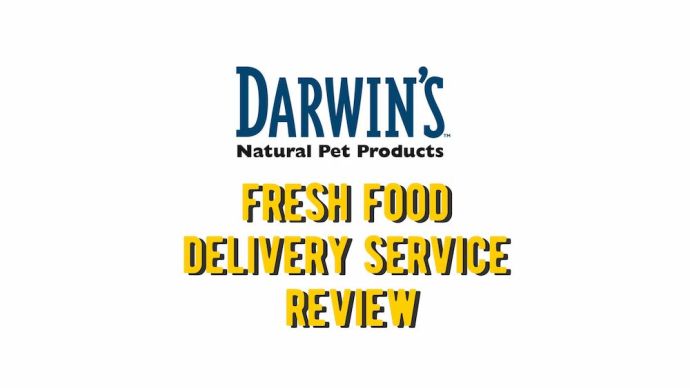 Dog Food Reviews Darwin’s Pet Food Review: Fresh Pet Food Delivery Service Review (Vet Approved)
Dog Food Reviews Darwin’s Pet Food Review: Fresh Pet Food Delivery Service Review (Vet Approved) - 442
- 0
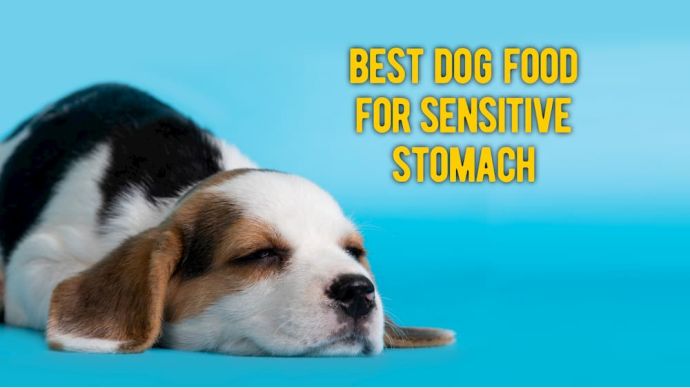 Dog Food Reviews The 10 Best Dog Food For a Sensitive Stomach (Vet Approved Review)
Dog Food Reviews The 10 Best Dog Food For a Sensitive Stomach (Vet Approved Review) - 771
- 0
 Dog Products & Toys Reviews The 10 Best Brush for Australian Shepherd: Review and Buying Guide
Dog Products & Toys Reviews The 10 Best Brush for Australian Shepherd: Review and Buying Guide - 13353
- 0











